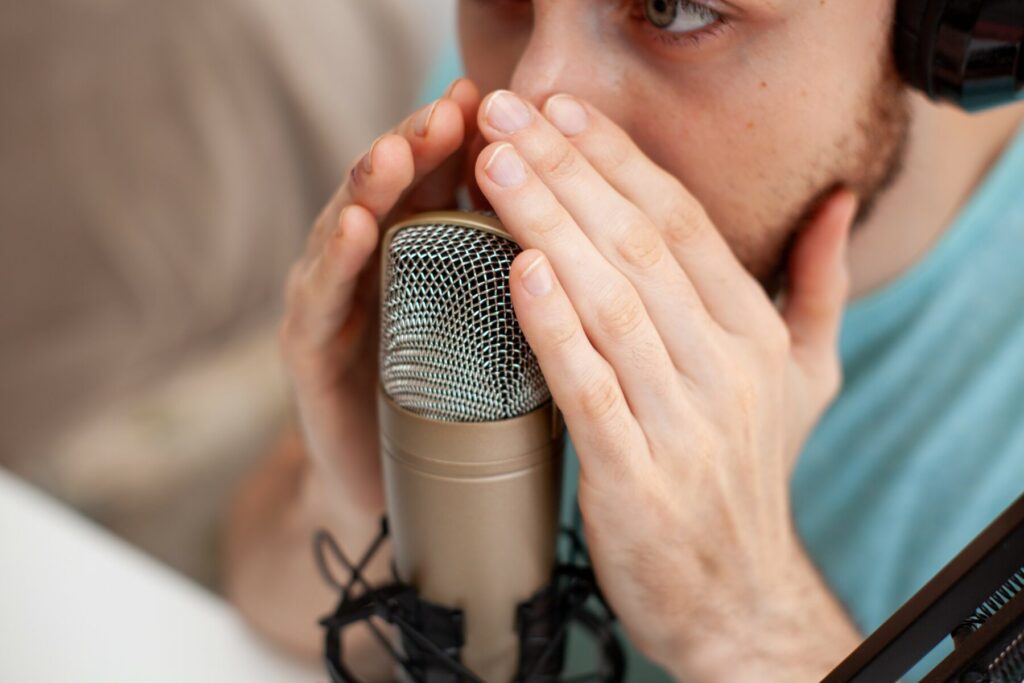Dieser Beitrag ist auch verfügbar auf:
Deutsch
Common triggers for people susceptible to ASMR range from friendly whispers and eating noises to the rustling of paper. But how does this phenomenon arise? And how do you get that pleasant tingling sensation in your head that many people report?
ASMR in facts and figures
- It is unclear how many people are capable of experiencing ASMR. The results of various estimates range from 20 percent to 70 percent of all people.
- The phenomenon was not given a name until 2010. This was awarded to him by the US computer scientist Jennifer Allen.
- It is estimated that over 500,000 YouTube channels specialize in ASMR videos.
- The most popular ASMR video currently has almost 500 million clicks.
- Some people are not susceptible to ASMR – the cause could be genetic.
Does the brain release happiness hormones during ASMR?
One theory links the positive reaction to certain sounds with the
hormone oxytocin
hormone. Among other things, it is released when we feel good. But oxytocin doesn’t just make you happy: it is also considered a relationship and bonding hormone that strengthens social bonds. The body produces oxytocin in the diencephalon. It is then released by the pituitary gland.
Tingling in the head: some people experience ASMR very intensely
Some people are so receptive to ASMR stimuli that they not only give them a
feeling of relaxation
that they trigger. They also feel a pleasant tingling sensation. This begins in the crown of the head and can spread over the neck to the limbs.
This tingling sensation occurs in waves. Those who are particularly receptive describe the effect of ASMR as a trance-like state accompanied by feelings of euphoria and relaxation. This is why ASMR is sometimes called brain orgasm.
This is what the abbreviation ASMR stands for
The term itself stands for Autonomous Sensory Meridian Response.
- Autonomous, because the effect can occur without our intervention.
- Sensory, because the phenomenon affects our senses.
- Meridians are a phenomenon of traditional Chinese medicine. This refers to pathways that transport life energy through the body.
The term ASMR does not come from science. In fact, the term was coined in 2010 by the US computer scientist Jennifer Allen. Allen herself felt the pleasant tingling sensation when stimuli that she found particularly pleasant came on. Allen did some research on the Internet – and discovered that there didn’t seem to be a name for this phenomenon. She created a Facebook group on the topic. It soon became clear that Allen was not alone in her experiences.
ASMR became a YouTube hype
Since 2012, ASMR has become a trending topic and is now the third most searched term on YouTube. The most-clicked video on the topic of ASMR has 485 million views (as of April 2024). The ten-minute video shows a South Korean woman eating colorful sweets. These include over 76,000 comments in practically all languages. They emphasize the relaxing effect of the video.
ASMR videos for a living
ASMR generally seems to be suitable for lucrative YouTube videos. The topic strikes a chord with many Internet users in search of relaxation. Most ASMR videos also require no translation. The sounds produced stimulate ASMR recipients all over the world and in some cases generate millions of clicks, which can generate high advertising revenues.
According to media reports, there are members of the ASMR scene on YouTube who earn millions with the help of advertising and sponsorship. It is estimated that there are at least 500,000 YouTube channels focusing on ASMR.
Despite the hype: ASMR is insufficiently scientifically researched
Nevertheless, there are still few scientific findings about the pleasant brain tingling sensation. Due to the high number of possible triggers for ASMR, studies are very time-consuming. Because the phenomenon is still relatively new, funding for scientific research is also very scarce. One of the few studies examined brain activity in real time when the head tingling occurs. The highly receptive test subjects in the study watched ASMR videos in an MRI machine.
The result: ASMR stimulates regions of the brain that help shape emotions, empathy and thus feelings of connectedness in general. This gave rise to the theory that the successful whisper videos in ASMR convey a feeling of connection and intimacy. Feelings that more and more people are missing in the modern Internet age.
Do people with ASMR have a tendency towards neuroticism?
In a further study, subjects with and without susceptibility to ASMR were examined and compared at rest. It turned out that people with ASMR susceptibility have more strongly interwoven
neuronal networks
in the brain.
This led to the theory that ASMR occurs as a side effect in people who can only suppress emotional reactions poorly or not at all. A study comparing the personality types of people with and without the ability to ASMR pointed in a similar direction. On average, the subjects with ASMR proved to be more prone to neurotic behavior.
What causes the tingling?
One of the few researchers working on ASMR is Craig Richard, Professor at the Department of Biopharmaceutical Sciences at Shenandoah University in Virginia. He sees the cause of the tingling sensation in a part of the cerebral cortex: the somatosensory cortex. It is a kind of body map that represents every part of the body.
The body map in the brain
In this brain region there are numerous overlaps between the brain regions. According to Richard, ASMR could lead to an interaction between the auditory and somatosensory cortex. The information about the sounds could reach the somatosensory cortex and trigger regions there that represent certain parts of the body. As if the corresponding body parts were actually being touched.
An ASMR video with a YouTuber performing ear care could thus trigger a response in the somatosensory cortex for the ears. And thus provide the familiar tingling sensation.
The reason for the fact that not everyone feels the tingling sensation is still insufficiently researched, but according to Richard it could be
genetically predisposed
be genetic.






